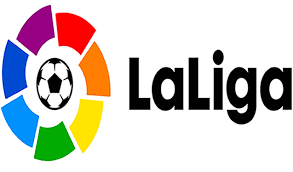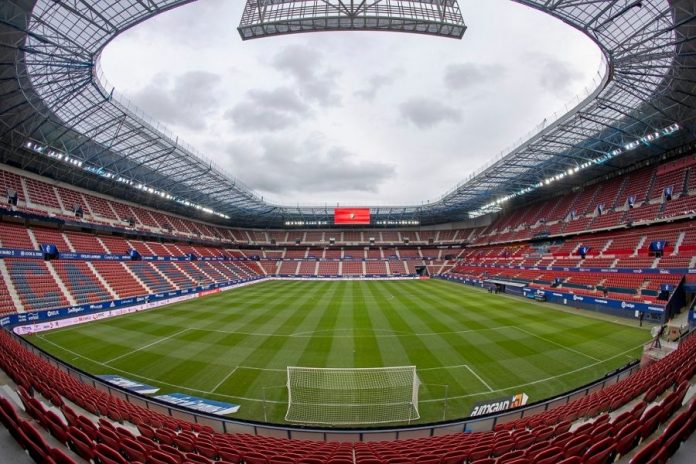La Liga, Spain’s top football division, has grown to become one of the most prestigious and competitive football leagues in the world. From its humble beginnings in 1929 to its current global status, the league has produced legendary players, memorable matches, and intense rivalries that have shaped the history of football. Here’s a detailed look at La Liga’s history and evolution over the years.
Origins and Early Years (1929-1936)
La Liga was established in 1929 with the inaugural season featuring just ten teams. Clubs like Real Madrid, FC Barcelona, and Athletic Club Bilbao were part of this original lineup. The first-ever La Liga champion was Barcelona, who claimed the title after a fiercely contested season.
In the early years, the league was dominated by teams such as Athletic Bilbao and Real Madrid, but it was a period of experimentation as clubs adjusted to the new national competition. Football in Spain was beginning to capture national attention, but the league was interrupted by the outbreak of the Spanish Civil War in 1936, halting football activities for three years.
Post-War Era and Growth (1939-1950s)
After the Spanish Civil War, La Liga resumed in 1939, and the post-war era saw the emergence of dominant forces such as Valencia and Sevilla, both of whom enjoyed successful spells. However, the most significant development during this time was the rise of Real Madrid and Barcelona as the powerhouses of Spanish football.
Real Madrid gained a reputation for their attacking play and began to build the foundation for what would become one of the most successful periods in football history. Meanwhile, Barcelona consistently remained in the title race, setting the stage for what would become one of the most intense football rivalries—the famous El Clásico.

The Di Stéfano Era and Real Madrid’s Dominance (1950s-1970s)
The 1950s were defined by the arrival of one of the greatest players in La Liga history—Alfredo Di Stéfano. His move to Real Madrid from River Plate (via a brief spell at Millonarios in Colombia) transformed the club into a global football powerhouse. Di Stéfano, alongside Ferenc Puskás, led Madrid to multiple league titles and established their dominance in both domestic and European football.
Real Madrid’s success during this era was unparalleled. Between 1953 and 1972, they won 14 league titles, including a record five consecutive titles from 1961 to 1965. This era also saw the club dominate the European Cup (now the UEFA Champions League), further solidifying their global influence.
Barcelona, though not as dominant, still posed a challenge with players like László Kubala and Johan Cruyff, the latter of whom would make an immense impact on Spanish football in the coming decades.
The Birth of the Modern Rivalry (1980s-1990s)
The 1980s and 1990s saw the rivalry between Real Madrid and Barcelona escalate. The 1980s were marked by the emergence of Real Sociedad and Athletic Club Bilbao, with both clubs winning league titles and challenging the dominance of the big two. However, Real Madrid soon reasserted themselves, winning five consecutive titles from 1985 to 1990, a period often referred to as the La Quinta del Buitre era, named after their iconic player, Emilio Butragueño.
Meanwhile, Barcelona responded in the early 1990s with the rise of the Dream Team, managed by Johan Cruyff. Cruyff revolutionized the game with his tactical approach, bringing the concept of total football to La Liga. His team, featuring stars like Hristo Stoichkov, Ronald Koeman, and Pep Guardiola, won four consecutive La Liga titles from 1991 to 1994 and the club’s first European Cup in 1992.
The Galácticos vs. Ronaldinho Era (2000s)
The turn of the millennium introduced the era of Los Galácticos at Real Madrid. Under the presidency of Florentino Pérez, the club signed global superstars like Zinedine Zidane, Ronaldo Nazário, David Beckham, and Luis Figo. While Real Madrid enjoyed success, winning league titles and European trophies, the team struggled to dominate La Liga consistently.
At the same time, Barcelona underwent a resurgence, largely due to the signing of Ronaldinho in 2003. The Brazilian brought flair, excitement, and success back to Barcelona, helping them win two league titles (2005, 2006) and the UEFA Champions League in 2006.

Messi, Ronaldo, and the Modern Era (2009-2021)
The late 2000s and 2010s were defined by the epic rivalry between Lionel Messi and Cristiano Ronaldo, two of the greatest footballers in history. Both players set incredible records and dominated the individual and team accolades during this period.
Messi, a product of Barcelona’s famed La Masia academy, led his team to numerous league titles under managers like Pep Guardiola, Luis Enrique, and Ernesto Valverde. His rivalry with Ronaldo, who moved to Real Madrid in 2009, turned El Clásico into one of the most anticipated fixtures in world football.
Real Madrid, under the leadership of Zinedine Zidane, won three consecutive Champions League titles between 2016 and 2018, further cementing their status as European giants. Ronaldo became the club’s all-time leading scorer before moving to Juventus in 2018.
ALSO READ
- The Ultimate Guide to La Liga: Spain’s Premier Football League
- La Liga Returns: Real Sociedad Host Injury-Hit Real Madrid in Epic Clash
- Exploring New Casinos in Kenya: A Rising Trend in Online Gaming
Recent Developments and Future Prospects (2022-Present)
La Liga has continued to evolve, with new stars like Vinícius Júnior and Pedri rising to prominence. The competition remains fierce, with Atletico Madrid, under Diego Simeone, breaking the Barcelona-Real Madrid dominance by winning the league in 2014 and 2021.
While Real Madrid and Barcelona continue to lead the charge, financial issues, changes in management, and the departure of legendary players like Messi (who left for PSG in 2021) have changed the landscape of the league. However, the rich history, incredible talent, and unforgettable rivalries ensure that La Liga remains one of the world’s most exciting football competitions.
Conclusion
From its early beginnings to the modern era, La Liga has been home to some of football’s greatest moments and players. Its blend of tactical brilliance, skillful players, and intense rivalries make it one of the most compelling leagues globally. As the league continues to grow, the next generation of stars is ready to carry forward the legacy of Spanish football.



